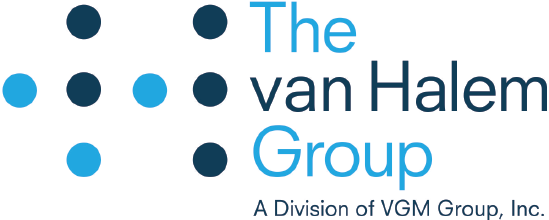By: Abrielle Uritz, RN, BSN, CPC, CEMC
It’s the end of the year, which means physicians and coders are getting ready for the updates that will be made to the current CPT code set. E/M services will now have a clearer definition and will be aligned with the times in the telephone care service codes.
- Patient must be established, while the problem being addressed may be new.
- Patient must initiate the service through Health Insurance Portability and Accountability Act (HIPAA)-compliant secure platforms.
- Codes can be reported once per seven-day period.
- Time begins with the initial personal review of the patient-generated inquiry.
- Time counted is spent in evaluation, professional decision-making, assessment and subsequent management.
- Time is accumulated over the seven days and includes time spent by the original physician and any other physicians or other qualified health professionals in the same group practice.
- Time does not include time spent on nonevaluative electronic communications including but not limited to scheduling appointments, referral notifications and test result notifications.
- Permanent documentation storage (electronic or hard copy) of the encounter(s) is required.
- If a separately reported E/M visit occurs within seven days of the initiation of an online digital E/M service, then the physician or other qualified health professionals work devoted to the online digital E/M service is incorporated into the separately reported E/M visit.
- Do not report this service during a procedural global period.
There have been 3 new time-based codes added which include:
- 99421 Online digital evaluation and management service, for an established patient, for up to 7 days, cumulative time during the 7 days; 5-10 minutes
- 99422 11-20 minutes
- 99423 21 or more minutes
Also, code 99444 (online E/M service) will be deleted.
Some updates have been made to the remote physiologic monitoring codes as well. CPT code 99457 was revised to indicate it is reported for the “first 20 minutes of remote physiologic monitoring” per calendar month. 99458 was added for each additional 20 minutes for remote physiological monitoring within the same calendar month. In addition, two new codes were added for self-measured blood pressure device use:
- 99473 Self-measured blood pressure using a device validated for clinical accuracy; patient education/training and device calibration
- 99474 separate self-measurements of two readings one minute apart, twice daily over a 30-day period (minimum of 12 readings), collection of data reported by the patient and/or caregiver to the physician or other qualified health care professional, with report of average systolic and diastolic pressures and subsequent communication of a treatment plan to the patient
If the services described by 99474 are provided on the same day the patient presents for an E/M service to the same provider, these services should be considered part of the E/M service and not reported separately.
New surgical codes have been added related to services of the pericardium, including pericardiocentesis:
- 33016 Pericardiocentesis, including imaging guidance, when performed
- 33017 Pericardial drainage with insertion of indwelling catheter, percutaneous, including fluoroscopy and/or ultrasound guidance, when performed; 6 years and older without congenital cardiac anomaly
- 33018 birth through 5 years of age or any age with congenital cardiac anomaly
- 33019 Pericardial drainage with insertion of indwelling catheter, percutaneous, including CT guidance
Codes 33010, 33011, 33015 and 76930 will be deleted.
There are some notes to keep in mind when reporting these codes.In order to report pericardial drainage with insertion of an indwelling catheter, the catheter needs to remain in place when the procedure is completed. These codes should not be reported in addition to many radiologic codes that already include the service. For example, do not report 75989 (radiological guidance [i.e., fluoroscopy, ultrasound or computed tomography] for percutaneous drainage [e.g., abscess, specimen collection] with placement of catheter, radiological supervision and interpretation) in addition to 33017, 33018 or 33019.
The code for orchiopexy was revised to remove “with or without hernia.”
- 54640 Orchiopexy, inguinal or scrotal approach
The spinal puncture codes now include “with fluoroscopic or CT guidance” and now a single code can be reported when there is fluoroscopic or CT guidance. Keep in mind, MRI or ultrasound imaging is not included and may be reported separately. Parenthetical notes indicate imaging services that are not reported separately.
- 62270 Spinal puncture, lumbar, diagnostic
- 62328 with fluoroscopic or CT guidance
- 62272 Spinal puncture, therapeutic, for drainage of cerebrospinal fluid (by needle or catheter)
- 62329 with fluoroscopic or CT guidance
All codes from 64400-64450 were revised to include “and/or steroid” injection. Codes 64400-64450 and 64454 describe the injection of an anesthetic agent(s) and/or steroid into a nerve plexus, nerve or branch. These codes are reported once per nerve plexus, nerve or branch as described in the descriptor regardless of the number of injections performed along the nerve plexus, nerve or branch described by the code. Imaging guidance is separately reported when used.
Codes 64451 and 64454 were added. These codes do include imaging guidance when performed. A table was added in the CPT manual to assist with coding the injection services.
- 64451 Injections, anesthetic agent(s) and/or steroid; genicular nerve branches, including imaging guidance, when performed
- 64454 genicular nerve branches, including imaging guidance, when performed
Codes 64402, 64410 and 64413 will be deleted. 64999 should be used to report injection of anesthetic agent and/or steroid to the facial nerve, phrenic nerve or cervical plexus.

